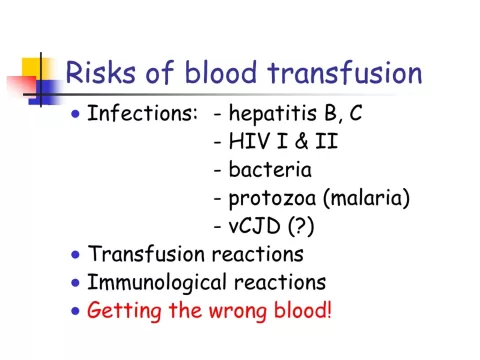Bacterial vaginosis (BV) is a common yet often misunderstood condition that affects many women, resulting from an imbalance in the natural flora of the vagina. This disorder can lead to a range of symptoms, including a thin, gray discharge accompanied by a strong, fishy odor, and sometimes itching or irritation. Understanding bacterial vaginosis is crucial for effective management, as many women experience minimal to no symptoms, which can complicate diagnosis and treatment. It is essential to recognize the implications of BV, especially concerning pregnancy, where it may increase the risk of complications such as preterm labor. By exploring BV symptoms, bacterial vaginosis treatment options, and the importance of accurate diagnosis, women can take proactive steps towards maintaining their vaginal health.
Known in medical terminology as bacterial vaginosis, this condition can also be referred to as vaginal dysbiosis, highlighting the imbalance of bacteria within the vaginal ecosystem. This imbalance often manifests in specific symptoms that may be mistaken for other conditions, leading to confusion among women experiencing symptoms. Treatment for this condition typically involves antibiotics aimed at restoring the natural bacterial balance, although it is vital to differentiate bacterial vaginosis from similar infections like yeast infections. Understanding how to treat bacterial vaginosis effectively requires a comprehensive approach, including awareness of BV and pregnancy implications. By recognizing alternative terms and concepts related to this condition, women can better navigate their health and seek appropriate care.
What Are the Common Symptoms of Bacterial Vaginosis?
Bacterial vaginosis (BV) often presents with a range of symptoms, making it essential to recognize them for timely diagnosis. The most notable symptom is a thin, grayish-white vaginal discharge that may emit a fishy odor, particularly after sexual intercourse or menstruation. Other symptoms may include itching or irritation in the vaginal area, and some women report a burning sensation during urination. However, it’s important to note that many women with BV may not exhibit any noticeable symptoms, which can lead to underdiagnosis and delays in treatment.
Due to the subtlety of symptoms, healthcare providers usually rely on a combination of clinical evaluation and laboratory tests to confirm the diagnosis of bacterial vaginosis. A pelvic exam is typically conducted, and a sample of vaginal fluid is collected for examination. This diagnostic process is crucial, as it helps differentiate BV from other infections, such as yeast infections or sexually transmitted infections that may manifest with similar symptoms. Understanding these symptoms can empower women to seek medical advice promptly, ensuring better health outcomes.
Effective Treatment Options for Bacterial Vaginosis
When it comes to treating bacterial vaginosis, antibiotics are the most commonly prescribed medications. Metronidazole and clindamycin are effective treatments that target the overgrowth of harmful bacteria in the vagina. However, while antibiotics can clear up the infection, they can also disrupt the natural balance of vaginal flora, leading to potential recurrences of BV or other infections. This highlights the importance of following a healthcare provider’s instructions closely and discussing any concerns regarding side effects or treatment effectiveness.
In addition to prescription antibiotics, some women may consider over-the-counter treatments. However, these options are often less effective for BV and may inadvertently worsen symptoms. It’s crucial for women to consult with their healthcare provider before trying any alternative treatments to ensure they are appropriate for their specific situation. Ongoing research into treatment strategies is vital, as it aims to identify more effective and sustainable solutions for managing bacterial vaginosis.
Bacterial Vaginosis and Its Implications During Pregnancy
Bacterial vaginosis can pose significant risks during pregnancy, making it essential for expectant mothers to be aware of this condition. Studies have linked BV to complications such as preterm labor and low birth weight, particularly in the second trimester. Because the symptoms of BV can be mild or absent, pregnant women should be vigilant and seek medical evaluation if they notice any unusual vaginal changes or odors. Early diagnosis and management are critical for minimizing risks to both the mother and the developing fetus.
Healthcare providers often recommend screening for bacterial vaginosis during routine prenatal visits, especially for women with a history of BV or associated complications. Treatment during pregnancy typically involves antibiotics that are deemed safe for both the mother and the baby. This proactive approach helps to ensure healthier pregnancy outcomes and reduce the likelihood of complications, underscoring the importance of awareness and education regarding bacterial vaginosis for pregnant women.
Distinguishing Bacterial Vaginosis from Other Vaginal Infections
Understanding how to differentiate bacterial vaginosis from other vaginal infections is crucial for effective treatment. For instance, yeast infections, which are caused by an overgrowth of the fungus Candida, can present symptoms similar to BV, such as discharge and itching. However, the discharge associated with a yeast infection is typically thick and white, resembling cottage cheese, rather than the thin, gray discharge of BV. Recognizing these differences can help women seek appropriate medical care and avoid unnecessary treatments.
Additionally, factors that contribute to the development of BV—such as douching, hormonal fluctuations, and certain lifestyle choices—should be understood to prevent recurrence. Educating women about these distinctions not only aids in proper diagnosis but also empowers them to make informed decisions about their health. By promoting awareness of bacterial vaginosis and its symptoms, healthcare providers can enhance patient education and improve outcomes for women experiencing vaginal health issues.
The Importance of Accurate Diagnosis for Bacterial Vaginosis
Accurate diagnosis is essential in managing bacterial vaginosis effectively. Given that many women may not experience pronounced symptoms, healthcare providers must rely on a combination of physical examinations and laboratory tests to confirm the presence of BV. A thorough diagnosis often includes evaluating vaginal discharge and assessing the balance of bacteria present. This process is critical to distinguishing BV from other conditions that may present similar symptoms, ensuring that patients receive the correct treatment.
Furthermore, understanding the implications of misdiagnosis is vital. Incorrectly attributing symptoms to another condition can lead to inappropriate treatment and prolonged discomfort. Women should feel empowered to discuss their symptoms candidly with their healthcare providers, advocating for the necessary tests that can lead to a timely and accurate diagnosis. This proactive approach can significantly enhance the management of bacterial vaginosis, improving overall health outcomes.
Frequently Asked Questions
What are the common BV symptoms to look out for?
Common bacterial vaginosis (BV) symptoms include a thin, gray discharge with a strong, fishy odor, vaginal itching, and irritation. Some women may not experience any symptoms at all, making it vital to consult a healthcare provider for diagnosis.
How is bacterial vaginosis diagnosed by healthcare professionals?
Bacterial vaginosis diagnosis typically involves a pelvic examination and analysis of vaginal discharge samples. Healthcare providers look for characteristic signs such as discharge color and odor to confirm BV.
What are the treatment options for bacterial vaginosis?
Bacterial vaginosis treatment usually involves antibiotics like metronidazole or clindamycin, which effectively target the harmful bacteria. Over-the-counter treatments may not be as effective and can sometimes aggravate symptoms.
Can bacterial vaginosis affect pregnancy, and if so, how?
Yes, bacterial vaginosis can impact pregnancy by increasing the risk of complications such as preterm labor and delivery. Pregnant women experiencing BV symptoms should seek prompt medical advice for management.
How can I effectively treat bacterial vaginosis at home?
While seeking medical advice is crucial, some home remedies for bacterial vaginosis include maintaining proper vaginal hygiene and avoiding irritants. However, it’s essential to consult a healthcare provider for appropriate bacterial vaginosis treatment.
| Aspect | Details |
|---|---|
| Overview of Bacterial Vaginosis (BV) | Bacterial vaginosis is a condition caused by an imbalance of bacteria in the vagina, leading to symptoms like discharge and odor. |
| Symptoms | Common symptoms include thin gray discharge, fishy odor, and itching. |
| Diagnosis | Diagnosis involves pelvic exams and testing vaginal discharge samples. |
| Treatment Options | Treatment typically includes antibiotics, though over-the-counter options may be less effective. |
| Implications for Pregnancy | BV can increase risks such as preterm labor, making early diagnosis crucial. |
| Differentiating BV | It is important to distinguish BV from yeast infections, which are caused by fungi. |
Summary
Bacterial vaginosis is an important health issue that requires awareness and understanding among women. The condition arises from an imbalance of vaginal bacteria, leading to a range of symptoms, particularly concerning during pregnancy due to its potential complications. Proper diagnosis and treatment can significantly improve health outcomes, emphasizing the need for consultation with healthcare professionals if symptoms arise. By recognizing the signs of bacterial vaginosis, individuals can take proactive steps to manage their health effectively.
The content provided on this blog (e.g., symptom descriptions, health tips, or general advice) is for informational purposes only and is not a substitute for professional medical advice, diagnosis, or treatment. Always seek the guidance of your physician or other qualified healthcare provider with any questions you may have regarding a medical condition. Never disregard professional medical advice or delay seeking it because of something you have read on this website. If you believe you may have a medical emergency, call your doctor or emergency services immediately. Reliance on any information provided by this blog is solely at your own risk.







